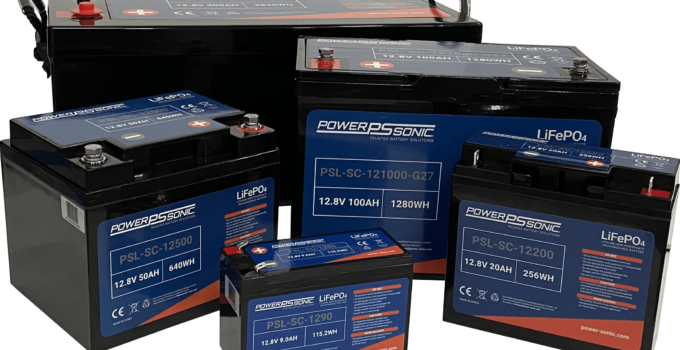During the conversion or replacement phase of the old one, the same question always arises, namely, which is the best for your VAN or Camper? As you know, we are always looking for comparisons with the real experiences of people who travel and use their vehicles long-term. So we have also cataloged a series of opinions relating to the experiences of different configurations and products.
But let’s start with the basics: The battery (or battery bank) is the most important component in the electrical system of any RV Batteries provide energy to run your vehicle’s electronic equipment and devices when you are not connected to the 220-volt mains. Without battery power, there would be no way to operate all the vehicle’s devices, more information you can find at Renogy.com.
Despite the importance of this component, many owners do not pay due attention to choosing the right battery bank for their vehicles and, above all, forget to maintain and use them correctly. Yes, you got it right. You must also understand how to use your batteries to maximize life and performance. It is not enough to install batteries of a good brand when the system has not been properly sized based on its use. Hence the idea for this article. By reading the information that we report below, the choice will be simpler, but above all, more aware.
In this article, which is, in fact, a real guide, we will provide everything you need to know to choose the best deep-cycle batteries for your vehicle. We’ll be providing in-depth reviews of some of the best deep-cycle batteries we’ve experienced that can be found on the market. Then we will share some tips on connecting the batteries to obtain a more complex bank to adapt it to your needs, and we will also discover that the batteries do not always have to be 12 Volts.
There will also be some tips for recharging the battery that you absolutely must know.
What is a deep-cycle battery?
In our Campers or VANs, everything relies on deep cycle batteries, from autoclave pumps to large appliances such as microwaves, T.V.s, air conditioners, and refrigerators. These batteries are designed to supply constant current over a long period. The deep cycle battery differs from the starter battery in that it is designed to supply high amounts of energy for short periods needed to start the engine.
A deep cycle battery is designed to deliver between 30% and 50% of its capacity in Ah, depending on the battery manufacturer and construction. When the batteries are recharged, the energy is accumulated, and the cycle begins again. A deep-cycle battery is constructed with thick plates than a starter battery. Technically, therefore, these plates have less surface area and are therefore able to deliver less instantaneous energy than a starter battery.
Deep cycle batteries are also the same ones used to power small vehicles, such as forklifts used in the industrial sector.
As you have seen from the list of batteries that we have seen before, we generally recommend choosing only deep-cycle batteries for the service counter. However, a specific type of battery performs both the starter and service functions very well.
The lithium battery is completely airtight and maintenance-free. It is very light and can be installed anywhere and in any position. It is 15 times more resistant to vibrations than other AGM RV batteries. And this is particularly useful in vehicles subject to a lot of vibration, such as those that practice off-road. This battery holds a charge longer and charges faster due to low internal resistance.
Types of deep cycle RV batteries
Deep cycle batteries dedicated to the world of recreational vehicles are of three different types: lead, sealed gel, and AGM. Let’s get one thing straight: No single battery is best for all applications. Each has its advantages and disadvantages. Flooded batteries, also called “wet” batteries, are the cheapest and most used batteries in RVs and solar panels system, but they require regular maintenance and must be used in a well-ventilated place. On the other hand, AGM and GEL batteries last longer and do not require maintenance but cost more.
Be careful because the best battery for your motorhome is not always the most expensive, but it is also rarely the cheapest. So you have to work a little to understand the right choice.
1. Wet batteries
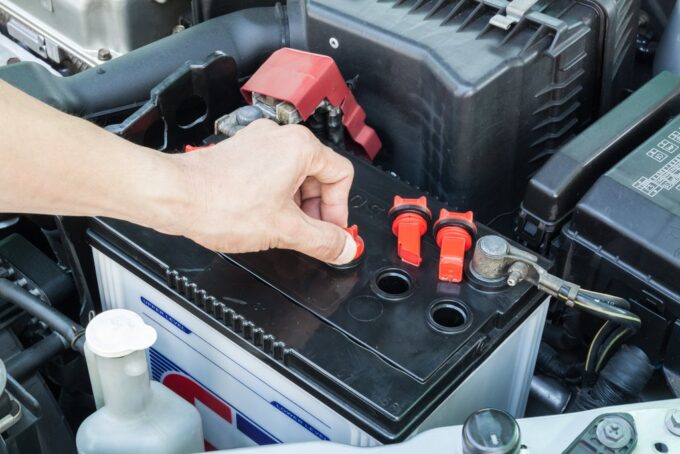
Source: ajcbattery.com
Lead-acid batteries, also known as “wet” batteries, are the most popular deep-cycle batteries currently used for solar applications. The term “wet” is used because this type of battery contains an amount of electrolyte fluid such that the plates are completely submerged.
Wet batteries consist of lead and lead oxide plates surrounded by an electrolyte, a mixture of sulfuric acid (H2SO4), and water (H2O). The extraction of electricity from the (discharged) battery causes the plates to be replaced with lead sulfate and the electrolyte to be diluted. Putting electricity into the battery (charging) forces the sulfate coating off the plates and back into the electrolyte, making it more concentrated. The plates revert to lead and lead oxide.
Hydrogen and oxygen gas are released during charging, as some water molecules in the electrolyte separate from the electrolysis. Vented wet cells allow gases to escape into the atmosphere, unlike GEL and AGM batteries, which recombine the gases and reintroduce them into the system. Hydrogen is an explosive gas, so battery boxes and compartments must be vented to allow the gas to escape safely.
Flood lead-acid batteries are not the best deep-cycle batteries for an RV They require regular maintenance and must be installed upright. As a further disadvantage, this battery does not tolerate high amounts of vibration. However, this type of deep-cycle battery has a lot going for it.
Wet batteries handle overcharging better than GEL battery and AGM battery because they are not sealed like the other types. They usually have the longest life and lowest cost of the other choices. They require regular maintenance by checking the acid level and keeping the terminals clean. Simple maintenance. Their initial cost is lower than similar-sized AGM or GEL batteries, and MUCH lower than lithium-type batteries.
A typical “wet” lead-acid battery can be expected to last 5 to 7 years if you maintain it regularly, but some budget units may perform less after as little as 3 years of regular use.
2. Deep Cycle AGM batteries
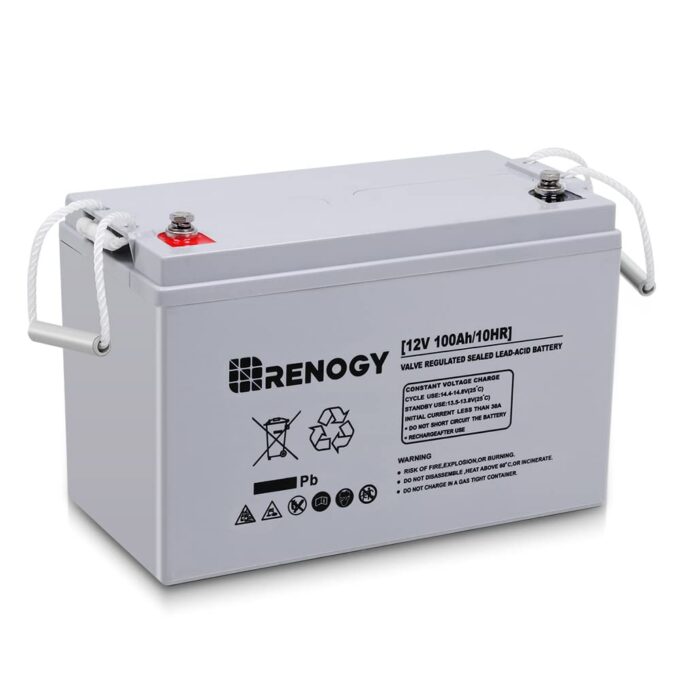
Source: amazon.com
Deep-cycle AGM batteries are perfect for most applications. These batteries are used in trucks, cars, forklifts, boats, and campers. They are always better, stronger, and longer lasting than wet batteries.
The AGM battery is a lead acid battery in which the electrolyte is absorbed in a glass fiber mat. The plates of an AGM battery are flat like those of wet lead-acid batteries, where these are wound in a spiral. The internal resistance of AGM batteries is lower than that of wet cells; therefore, they can handle higher temperatures and self-discharge more slowly than other types of batteries.
AGM deep cycle batteries differ from wet batteries in that the electrolyte is held in glass fiber mats rather than distributed freely around the plates.
Pros and cons of AGM batteries
AGM deep cycle batteries are a great choice for vehicles with large power demands and for those looking for greater reliability and longer battery life.
One of the biggest advantages of an AGM deep-cycle battery is that it is maintenance-free. In contrast, a wet lead-acid battery requires regular maintenance and a blanket charge every six months to prevent sulphation buildup. You should know that an AGM deep cycle battery is less prone to sulphation and can be stored longer before recharging is needed. For these reasons, AGM batteries are the best choice if you do not want to do the necessary maintenance.
Another advantage of AGM batteries is that their recharge can be up to 5 times faster than the wet version. We also remind you that AGM offers a depth of discharge that generally never exceeds 50% of its A.H. value. However, the AGM battery can also be installed in any orientation and resists well at low temperatures. So, AGM deep cycle batteries are the perfect choice if your motorhome is used a lot during the winter months.
However, AGM batteries are sensitive to overcharging. The charging of AGM deep cycle batteries differs from that of the car battery. The voltage required to charge them is higher than that produced by the vehicle’s alternator. Therefore it is necessary to take precautions that are generally not taken into consideration by the majority of users of this type of battery nor by many professional fitters.
3. Deep cycle GEL batteries
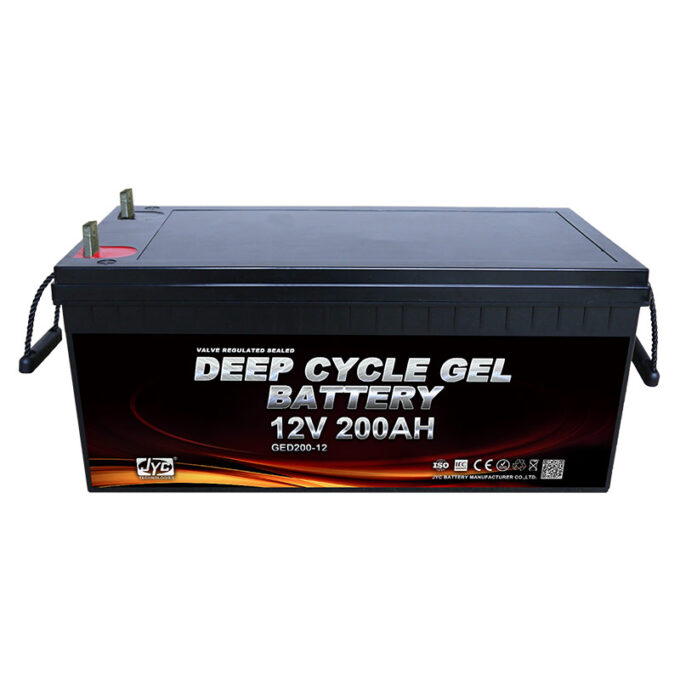
Source: meritsunpower.com
GEL batteries preceded the AGM type but are losing market share to the latter because they are slightly more expensive.
AGM and GEL batteries are often confused, and we have repeatedly come across sellers who are not very prepared in this regard. They are both sealed, deep cycle, and can be transported safely, so how are they different?
A GEL cell battery is a battery that uses sulfuric acid that has been mixed with silica to create an immobile gel-like substance. Thanks to this characteristic, the GEL battery can be used in any position concerning the AGM ones and better tolerates mechanical stress. These batteries do not produce any fumes, making them ideal for use in places with little ventilation.
GEL batteries are more subject to wear if not charged correctly, and therefore if smart chargers are not used (forget the alternator). Still, they can last much longer if properly controlled, providing more cycles.
4. Deep cycle lithium-ion batteries
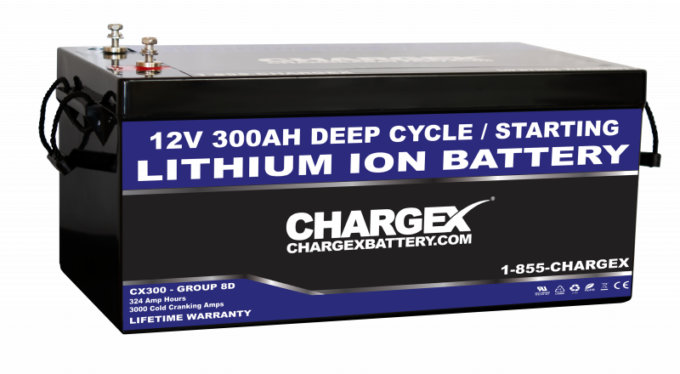
Source: lithiumion-batteries.com
There are many reasons why lithium far outperforms lead acid and AGM or GEL batteries. Meanwhile, it is a lighter option in terms of weight and offers efficiency in terms of life cycles. Lithium is about 2.5 times more efficient at low temperatures and, like GEL or AGM, allows versatile mounting in any position. A fundamental point to highlight regarding lithium batteries is that they can be deeply discharged up to about 80% of their rated value in A.H. However, the higher upfront costs of lithium batteries need to be weighed carefully as the benefits may only be fictitious.
Be careful because lithium is now becoming a fad, but there are different types of these batteries. As far as recreational vehicles are concerned, only lithium iron phosphate (LiFePO4) should be evaluated.
LiFePO4 deep cycle batteries have a very constant discharge voltage. The voltage remains near 3.2V (per cell) during the discharge until the cell is depleted. This allows the cell to deliver almost full power until it is discharged. And it can greatly simplify or even eliminate the need for voltage regulation loops.
Technically a LiFePO4 cell has a nominal voltage of 3.2 Volts, and therefore four cells can be placed in series to obtain a nominal voltage of 12.8 V, thus approaching the voltage of the other batteries.
A lead-acid battery fails prematurely due to sulfation if:
- works for long periods of time in deficit mode (ie the battery is never fully charged or very rarely).
- is left partially loaded or, even worse, totally unloaded (yacht or mobile home during the winter).
A LiFePo4 battery does not need to be fully charged, which is one of the main advantages of this type of battery compared to lead-acid ones. Other advantages are the wide operating temperature range, excellent charge cycle performance, low internal resistance, and high efficiency.
But the costs of this battery are high. Compared to lead-acid batteries, LiFePO4 batteries are more expensive. However, in applications with high operational requirements, the brunt of the initial cost will be more than offset by increased life, superior reliability, and optimum efficiency.
The Renogy battery has a Bluetooth interface through which cell voltages, temperature, and alarm status can be monitored. It is useful for identifying a (possible) problem, such as a cell imbalance.

